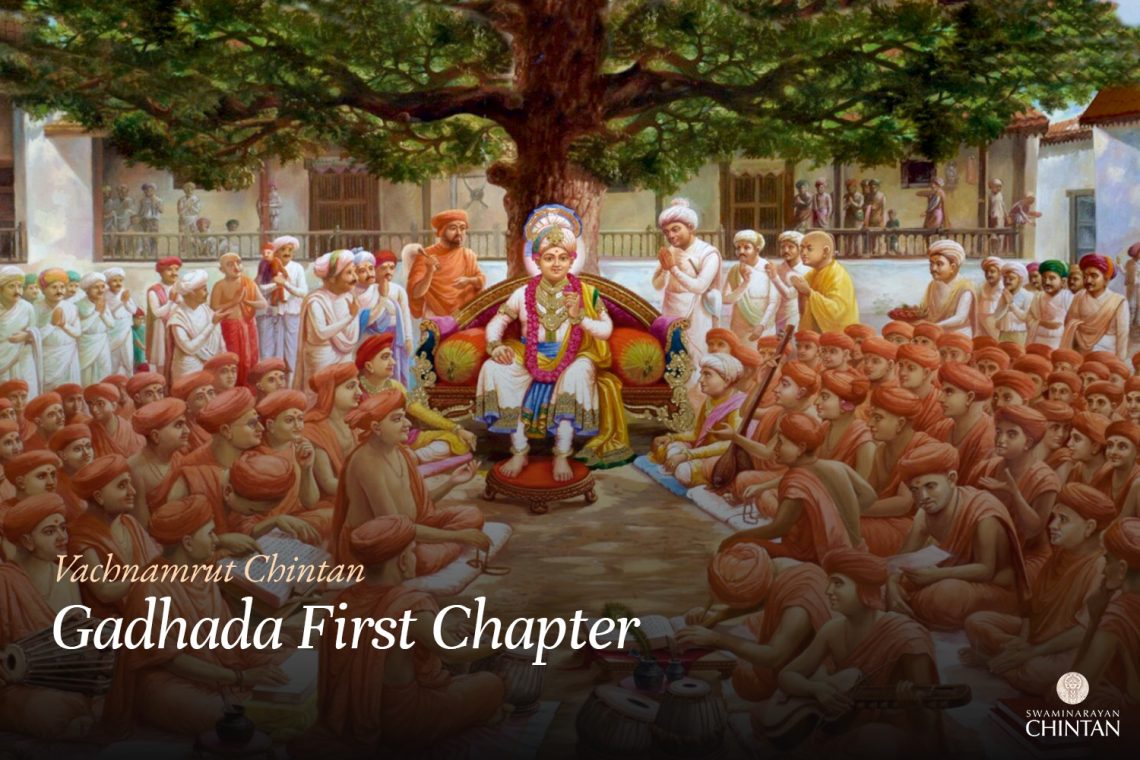Central Insights:
- Clarifying Vidhi-Nishedh (do’s and dont’s) in the path of salvation.
Key Points:
- Developing strength towards Vidhi and Nishedh.
Explanation
In the assembly of santos and devotees, Vedantic Brahmins too were seated. Observing them, Shreeji Maharaj asked, ‘What would be the understanding of someone who claims that Vidhi and Nishedh are false… and only one supreme Brahm fills everything? Shankaracharya has indeed described the principle of Vidhi and Nishedh. Didn’t he have knowledge? So, anyone claiming otherwise is just speaking out of ignorance. Vidhi and Nishedh mainly concern the system of caste and stages of life. And the assertion that these Vidhi and Nishedh are false is only said in a Nirvikalp state of spiritual realization and that does not make everything false in reality.
If Vidhi and Nishedh were false, then among all the Tyagis Parmahand (ascetic) the Jadabharata is considered is Superior. Only the story of Jadabharata is mentioned in the Puranas and Vedantic texts. Such a significant personality, Jadabharata, was once Rishabhdev, the son of God, who renounced his kingdom and went to the forest. Due to his compassion and attachment to a deer, he faced consequences and had to be reborn as a deer. Conversely, the gopis loved Lord Krishna without any worldly desires, and thus, transcended the Maya and reached the ultimate divine abode. They did so because Shri Krishna was the supreme divine figure.
The main point here is the introduction of Vidhi and Nishedh by Shriji Maharaj. These include actions like bathing, touching, and sharing food. Among them, the emphasis is on Vidhi and Nishedh. In this context, why did Shriji Maharaj use the examples of the gopis and Bharata?
The resolution is that there are two types of Vidhi and Nishedh. One is related to the system of caste and life stages, and the other is for the path of Aatmakalyan (Salvation). The gopis might have broken societal norms, but they adhered to the path of Aatmakalyan. The main Vidhi for this path is to remain in God’s commandments and to engage in the company of the good (satsang). The Nishedh is against associating with the bad and engaging in sinful acts.
Vidhi and Nishedh can be seen in both actions and associations. For Aatmakalyan, the primary Vidhi is to stay in God’s command and engage in satsang. When deviating from this path, even the slightest negative association can lead to degradation. Shriji Maharaj mentioned that a little bit of satsang can lead to betterment, whereas a small amount of bad company can lead to significant downfall. Therefore, these Vidhi and Nishedh are real and should be practiced by everyone.
Glossary
| Aatmakalyan – Path of self- realization and salvation |
| Bharata – A figure who experienced consequences due to attachment |
| Brahm – Supreme Reality, God The ultimate truth in Vedanta, often misinterpreted by dry Vedantists. |
| Caste and Life Stages – The system of Varna and Ashram |
| Gopis – Devotees of Krishna The cowherd women of Vrindavan known for their unparalleled love for Krishna. |
| Maya – Illusion The material energy that entangles the Jeev in worldly existence and distracts from Bhagwan. |
| Negative Association – Bad company or influence |
| Nirvikalp – A state of complete focus and absorption in the object of meditation, free from mental fluctuations. |
| Salokya – Liberation in the same divine abode as God |
| Satsang – Association with saints or good company |

